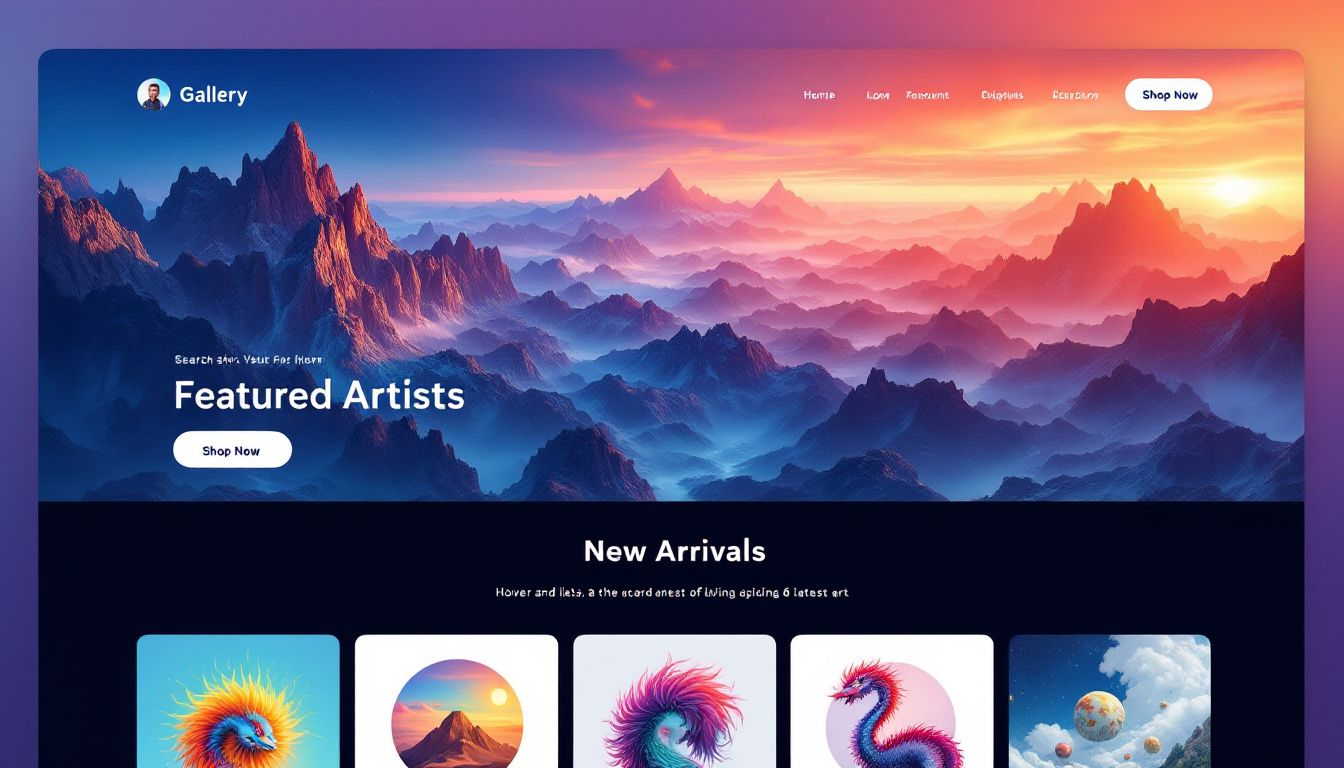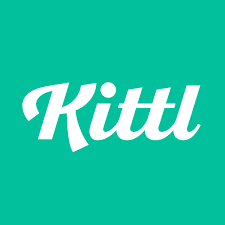
Best Tips to Sell Art Prints on Amazon Successfully in 2025
Share
Ready to sell art prints on Amazon and sell art online? Start by setting up your Amazon Seller Account, selecting a reliable print-on-demand supplier and crafting compelling listings. This guide covers all you need to know to get started and succeed.
How to Sell Art in Amazon: Best Tips for Success in 2025 - Quick Bullets:
-
Set Up Your Amazon Seller Account
Choose between an Individual or Professional account based on your selling volume. A Professional account offers advanced tools and analytics for scaling your art print business.
-
Select a Reliable Print-on-Demand Supplier
Partner with suppliers that integrate seamlessly with Amazon to ensure efficient order fulfillment and high-quality prints.
-
Create and Upload High-Quality Designs
Digitize your artwork with high-resolution scans or photographs. Ensure your designs are optimized for various print formats and sizes.
-
Optimize Product Listings
Craft compelling product titles and descriptions using relevant keywords. Include high-quality images to showcase your art prints effectively.
-
Implement Effective Marketing Strategies
Utilize social media platforms and Amazon's advertising tools to increase visibility and drive traffic to your listings.
-
Manage Orders and Customer Service Efficiently
Monitor orders regularly and provide prompt customer support to maintain high seller ratings and customer satisfaction.
-
Protect Your Artwork
Consider watermarking images and registering your designs to safeguard your intellectual property rights.
Setting Up Your Amazon Seller Account

The first step in selling art prints on Amazon is setting up your Amazon Seller Account. This process is straightforward but requires attention to detail to ensure a smooth start. Begin by registering through Amazon Seller Central, where you can use your existing Amazon customer account credentials. Registration can be completed within a few hours, but identity verification might take up to three business days.
Understanding the fees and costs associated with your seller account is crucial. Amazon offers two types of accounts: Basic Individual and Professional. The choice depends on your selling needs and the volume of products you plan to list. A Professional Seller Account, although it comes with a monthly fee, provides additional benefits like listing more products and access to Amazon Marketplace Web Service.
Breaking down the registration process and understanding the associated fees will provide a clear picture of what to expect when you have started selling on Amazon.
Registering as a Seller
To start selling art on Amazon as a content creator, it’s essential to understand your target audience and identify your style. This foundation will guide your product listings and marketing strategies. When setting up your Amazon selling account, you can choose between a Basic Individual Account and a Professional Seller Account. The latter comes with privileges such as the ability to list more products and access to Amazon Marketplace Web Service.
When creating an Amazon selling account, include quality images, compelling descriptions and effective pricing. These elements are crucial for attracting potential buyers and making informed purchasing decisions. Opting for a Professional Seller Account ensures you have the tools needed to manage your online store effectively and sell online to a broader audience.
Understanding Fees and Costs
Amazon charges a monthly fee for Professional Seller Accounts, along with additional selling fees based on product sales. It’s important to factor in these costs when pricing your art prints to ensure profitability.
The upfront costs might seem daunting, but with strategic planning, selling on Amazon can be highly cost-effective. Additionally, selling digital products on Amazon offers other benefits compared to physical products, such as lower storage and shipping costs.
Choosing the Right Print-on-Demand Supplier
Choosing the right print-on-demand (POD) supplier is a critical step in selling art prints on Amazon. The primary advantage of POD is that there’s no need to own inventory or manage shipping, as suppliers handle production and fulfillment, making it easier to sell products. Popular POD suppliers like Teelaunch, GearBubble, Printify and Printful are known for their reliability and integration capabilities.
Amazon’s vast customer base and accessibility make it one of the best platforms to sell art prints. However, to ensure efficient order fulfillment and customer satisfaction, it’s crucial to choose a POD supplier that integrates seamlessly with Amazon. This integration will streamline your operations and help you maintain a high level of service.
Now, let’s delve into how to evaluate and set up integration with POD suppliers to ensure a seamless selling experience.
Evaluating Suppliers
When evaluating print-on-demand suppliers, consider their integration capabilities with Amazon for seamless management. A successful selling experience hinges on a supplier’s ability to handle demand products efficiently. Look for suppliers with a proven track record of reliability, quality and customer service.
Additionally, assess their product range and customization options to ensure they meet your needs and the preferences of your potential customers. This careful evaluation will help you choose a supplier that supports your business goals and helps you reach customers more effectively, enhancing your competitive edge in the market.
Setting Up Integration
Connecting Printify to Amazon requires a Professional selling account for effective management. Setting up this integration involves linking your Amazon seller account with the POD supplier’s platform, allowing for automated order processing and fulfillment.
This seamless connection ensures timely deliveries and satisfied customers.
Creating and Uploading Designs

Creating and uploading high-quality designs is essential for attracting potential customers and making sales on Amazon. Artwork should be created in RGB color mode to ensure vibrant print results. High-quality images are crucial for listings, as they serve as the main visual representation of your product and significantly enhance its appeal.
Utilizing product mockups for the main image can further enhance visual appeal and provide customers with a realistic view of the final product. Good design and visuals create a strong first impression, which can lead to higher sales.
Exploring the intricacies of designing art prints for art enthusiasts in the art world and the tools available to visualize your creations will enhance your overall process.
Designing Art Prints

First-time print-on-demand sellers should focus on simplicity and effectiveness, avoiding complex and time-intensive designs. Simple, text-based designs are the most popular choice for POD products. These types of designs are commonly used due to their appeal. Consistently creating new designs is essential for maintaining a steady income flow.
Design elements should be positioned thoughtfully to enhance visual appeal across different products. Using a 300 dpi PNG format for artwork ensures high quality during printing, preventing pixelation. The recommended printable area for art print designs is 15 x 18 inches to maximize visibility.
Freelancer platforms like Freelancer.com, Fiverr and Upwork are valuable resources for finding graphic designers to create quality designs for your own website. Having a dedicated designer can help manage your POD business more efficiently, allowing for better focus on design quality.
Using Mockup Tools
Mockup tools help visualize how the design will look on the selected product before going live. Utilize online mockup tools to see how your designs will appear on actual products before publishing. This step ensures that your listings accurately represent the final product, enhancing customer trust and satisfaction. Additionally, you can find great deals during a sale online.
Listing Your Art Prints on Amazon

Listing your art prints on Amazon effectively is crucial for attracting buyers and making sales. Use product mockups as the main image for your listings to attract potential customers. Optimize the product name with relevant keywords to improve search visibility.
Craft effective product descriptions that not only inform but also entice customers to make a purchase. Incorporate relevant keywords into both titles and descriptions to maximize discoverability on Amazon.
Let’s break down the elements of a successful listing, starting with crafting titles and descriptions.
Crafting Effective Titles and Descriptions
Concise yet descriptive product titles that include relevant keywords improve searchability. Include essential details to enable customers to make informed purchase decisions based solely on the title. Titles should follow Amazon’s character limit guidelines to maintain professionalism and avoid appearing spammy.
Including the brand name and product type in titles can improve visibility and help attract potential customers. Descriptions should highlight unique features of the art prints, including size, material and the inspiration behind the piece.

Optimizing Keywords
SEO increases visibility and makes it easier for customers to find products. Utilize a mix of specific and broad keywords to enhance visibility in search results on Amazon. Researching competitors’ listings can provide insights into effective keywords that resonate with target audiences.
Incorporating a variety of keywords, including both short-tail and long-tail variations, can drive targeted traffic to product listings. Regularly review and update keywords based on market trends to significantly enhance product visibility. Utilizing SEO-focused content can increase visibility for your art prints on search engines.
Marketing Your Art Prints

Marketing your art prints effectively can significantly increase your sales and reach. Many artists achieve financial success through a combination of effective marketing strategies and creative designs. If you want to sell paintings or sell prints, selling original art by uploading your designs to Amazon can earn you royalties for every product sold. Additionally, Amazon Merch is a valuable platform for artists to sell their designs on various products without the burden of maintaining inventory.
Print on demand art and digital art have seen commercial success recently. Combining effective marketing strategies with creative designs can significantly increase online sales. Let’s explore how leveraging social media and Amazon’s advertising tools can boost your visibility and sales.
Leveraging Social Media
Using social media platforms allows artists to reach a wider audience for their art prints. Instagram, in particular, is effective for showcasing work and engaging with a broader audience. Building an online community through social media fosters loyalty and engagement among followers.
Promoting your unique creations on social media can help capture a broader audience for your artwork. This broader reach can lead to increased sales and a more robust online business.
Utilizing Amazon Advertising
Amazon offers several advertising tools designed to help sellers increase visibility for their products. Utilizing Amazon’s advertising tools can significantly improve your chances of being discovered by potential customers. Segment your audience and target specific demographics to maximize the effectiveness of your advertising.
Regularly analyze your online advertising performance to make informed adjustments and improve results. This continuous optimization will help you maintain a competitive edge and increase sales.
Managing Orders and Customer Service
Managing orders and providing excellent customer service are crucial for ensuring customer satisfaction and building trust. Enrolling in Amazon Brand Registry provides tools for protecting your brand against counterfeits and ensures control over product listings.
A smooth order fulfillment process is essential for timely deliveries and customer satisfaction. Quickly resolving customer inquiries can enhance customer satisfaction and encourage repeat business.
Let’s delve into the order fulfillment process and handling customer inquiries effectively.
Order Fulfillment Process
Once a customer places an order, promptly relay the order details to the print-on-demand supplier for processing. The fulfillment process includes the production of ordered items and their subsequent shipment to the customer.
POD companies like GearBubble and Printful offer dropship integration tools that streamline order fulfillment by automatically providing tracking information to marketplaces.
Handling Customer Inquiries
Responding swiftly to customer inquiries can enhance their overall shopping experience. Promptly addressing customer questions and concerns is essential to maintain customer satisfaction.
Clear communication about order status and resolution of issues is vital to maintain trust with customers.
Protecting Your Artwork

Protecting your artwork is crucial to prevent unauthorized use and infringement. Copyright law automatically protects original artwork as soon as it is fixed in a tangible form, such as painting or digital creation. This protection extends to digital formats, providing artists with peace of mind.
Artists should be aware of their rights under copyright law and may wish to pursue formal registration for additional legal benefits against infringement. Exploring the process of copyright registration and utilizing Amazon Brand Registry provides additional protection.
Copyright Registration
To register artwork, applicants must submit an application, pay a filing fee and provide a copy of the work, classified as a ‘deposit’. This formal registration provides additional legal benefits, making it easier to enforce your rights in case of infringement.
Submitting a copyright application involves filling out the appropriate forms and paying any necessary fees. This step ensures your creative works are protected and you maintain control over their use.
Using Amazon Brand Registry
Amazon Brand Registry helps protect registered trademarks, allowing sellers to report infringement and unauthorized use of their brand. Brands in Amazon Brand Registry can automatically block over 99% of infringing listings through proactive measures.
Summary
Selling art prints on Amazon in 2025 presents an incredible opportunity for artists to reach a global audience and turn their passion into profit. By following the steps outlined in this guide—from setting up your Amazon Seller Account and choosing a reliable print-on-demand supplier, to creating compelling designs and marketing your products effectively—you can maximize your success on one of the world’s largest e-commerce platforms.
Remember, the key to thriving in this competitive market is continuous improvement. Regularly update your designs, optimize your listings and engage with your customers to build a loyal following. With dedication and strategic planning, your artistic journey on Amazon can be both rewarding and financially successful
Further Reading for your Print on Demand Business:
Is Print on Demand still viable in 2025
Print on Demand for Passive Income
Dropshipping vs Print on Demand
Redbubble Vs Etsy - best platform for Artists in 2025
Frequently Asked Questions
How do I start selling art prints on Amazon?
To start selling art prints on Amazon, set up an Amazon Seller Account and select a reputable print-on-demand supplier, ensuring your designs are of high quality for your listings. This approach will help you successfully launch your art print business.
What are the costs associated with selling art prints on Amazon?
Selling art prints on Amazon incurs costs such as a monthly fee for Professional Seller Accounts and additional selling fees based on your product sales. It's essential to consider these expenses when pricing your prints for sale.
How can I protect my artwork from unauthorized use for my online business?
To protect your artwork from unauthorized use, ensure you register your copyright, as this provides automatic protection and consider using tools like Amazon Brand Registry for added security. This proactive approach will help safeguard your creative work effectively.
What marketing strategies should I use to sell my art prints?
To effectively sell your art prints, focus on leveraging social media platforms for broader audience reach and utilize Amazon's advertising tools to enhance visibility and drive sales.
How do I handle customer inquiries and ensure a smooth order fulfillment process?
To ensure a smooth order fulfillment process, respond promptly to customer inquiries and collaborate effectively with your print-on-demand suppliers for efficient order management and timely deliveries.










































































































